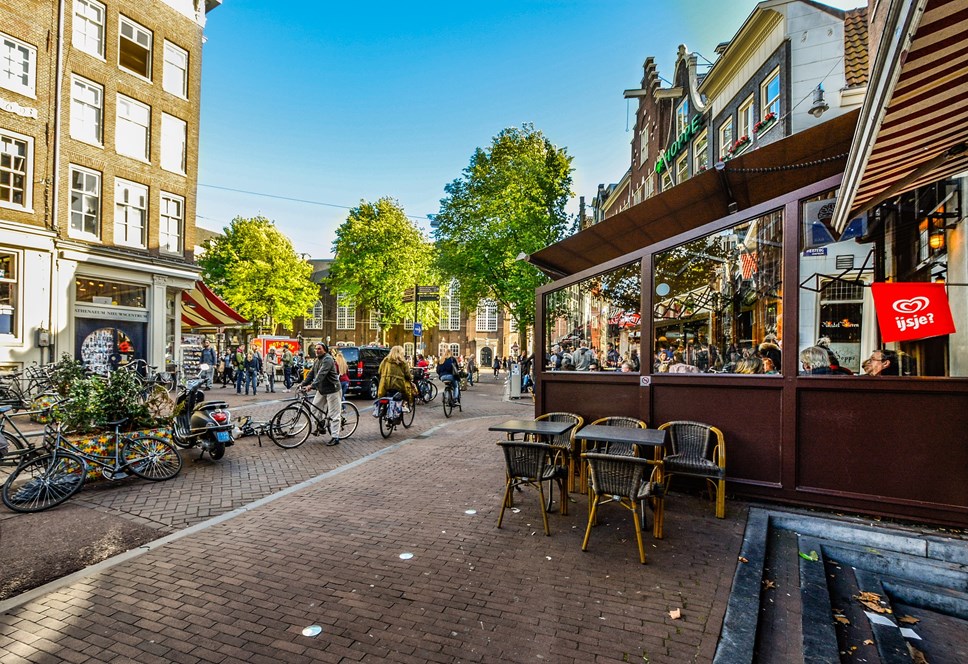
Monday Musing: What drives behaviour change so fewer journeys are made by car?
Following the BPA's Annual Conference, Public Affairs & Media Officer, Jo Audley continues the discussion on prices and incentives for active travel
In my last blog, Feeling the squeeze – why bad parking should pay the right price I ended with the conundrum of conflicting policies where the Department for Transport is investing in and encouraging active travel, whereas the Department for Levelling-up, Housing and Communities is pursuing a policy to lower private parking charges, consequently making car usage more attractive. In essence, incentives to choose travel that is healthier and environmentally friendly are lacking.
Since then the BPA held its Annual Conference, which was jammed packed with ideas, projects and potential scenarios for the future of car parks and transport, including ideas for incentivising us to get out of our cars.
What a honour to see Professor Donald Shoup of UCLA at the conference who is, according to his BPA bio, the world’s foremost academic expert on parking and mobility and whose research encompasses the relationships between parking, transportation, public finance, and land economics. During the interview, the professor proposed the idea of being given the parking tariff back if you don’t take a car, so the money goes straight into your pocket. Well, that’s novel! So anyone taking the car could still get free parking, but by not taking the car you receive a reward? I like it and I’m sure it would make some people think twice about using the car for short journeys. But there is a potential drawback in that affluent people might consider the pay-off too low to worry about.
What other incentives could there be to get us out of our cars? Another consistent theme throughout the conference was attractiveness, which could be the route into a town centre or the town centre itself. High Street traders balk at the idea of parking charges, citing it puts people off visiting and spending money in their stores and one can understand their point if taking parking in isolation since we typically use a stick approach to change behaviour; a motorist is charged for parking and charged even more for parking badly! But if the infrastructure was in place to enjoy the walk, cycle or scooter to the High Street the stores would likely thrive.
We learnt how Copenhagen incrementally transformed into a cycling city by recognising that one must have an alternative to the car to enable choice and change to occur. The city charged a very high price for parking at the same time as building a cycling infrastructure to make cycling a faster, safer and more convenient way to travel. Having fewer cars made the urban space more attractive to people, allowed cafes and shops to overspill creating a vibrant social vibe that people enjoyed. When one area reaped the benefits, the surrounding areas wanted it too!
What also helped was the ability to pay for a single journey that incorporated multi-modal transport and provided real-time data on bike availability, train and bus times. A quick scan of a QR code when changing mode enables dynamic and accurate pricing and public transport allows people to take bicycles on board. Making a journey seamless is crucial because a car is the ideal vehicle for door to door journeys, but iron out the wrinkles and you can go door to door on a multi-modal journey. What’s more, electric transport is fun!
Cities are the obvious choice for putting in public transport and cycle lanes because the population density and air quality issues make them prime candidates. However, smaller towns and villages could also benefit from mobility hubs and cycle lanes. E-bikes are becoming hugely popular and take all the effort out of hilly terrain and cargo bikes make deliveries greener (and these days can accommodate a fridge!) Creating a cycle lane through a natural landscape would make the journey something to look forward to and reduce emissions by 40%. Worried about the weather? The wardrobe is available and becoming more fashionable too.
Fewer cars inevitably leads to re-imaging what car parks could be used for if not for storing cars, which for a parking association might sound rather alarming. One idea is to make them into mobility hubs where one can collect shopping, use a play area, plug in an electric car and perhaps grab a coffee. They could act as a gateway to cycling routes for leisure, to places of interest or tourist attractions, or somewhere to pick up a car share vehicle. By making car parks into ‘mini-markets’, these places still have a function, enabling us to go on to do other things. A car park is though limited by its boundaries and taking spaces for other uses automatically means fewer bays for parking. Inevitably, one would be looking for different transport modes on the assumption that there would be limited and expensive parking available.
That said 41% of commuting journeys in Copenhagen are done by bicycle going up to 62% when including those who live in the city itself. In the UK only 2% of commuting journeys are done by bike, so there is huge scope to reduce the number of car journeys and still have available parking. And whatever the destination, secure bicycle parking is an absolute must have.
In essence, behaviour change relies on multiple factors; ensuring there are travel alternatives and the technology in place for seamless journeys that, if implemented with the correct prices and social inclusion in mind, could radically change the way we travel.
What about the kerbside and deliveries? As I’m running out of space I’ll cover that in my next Monday Musing. Until then, why not have a look at the Park Active website or the Government’s plans in Gear change; A bold vision for cycling and walking.
